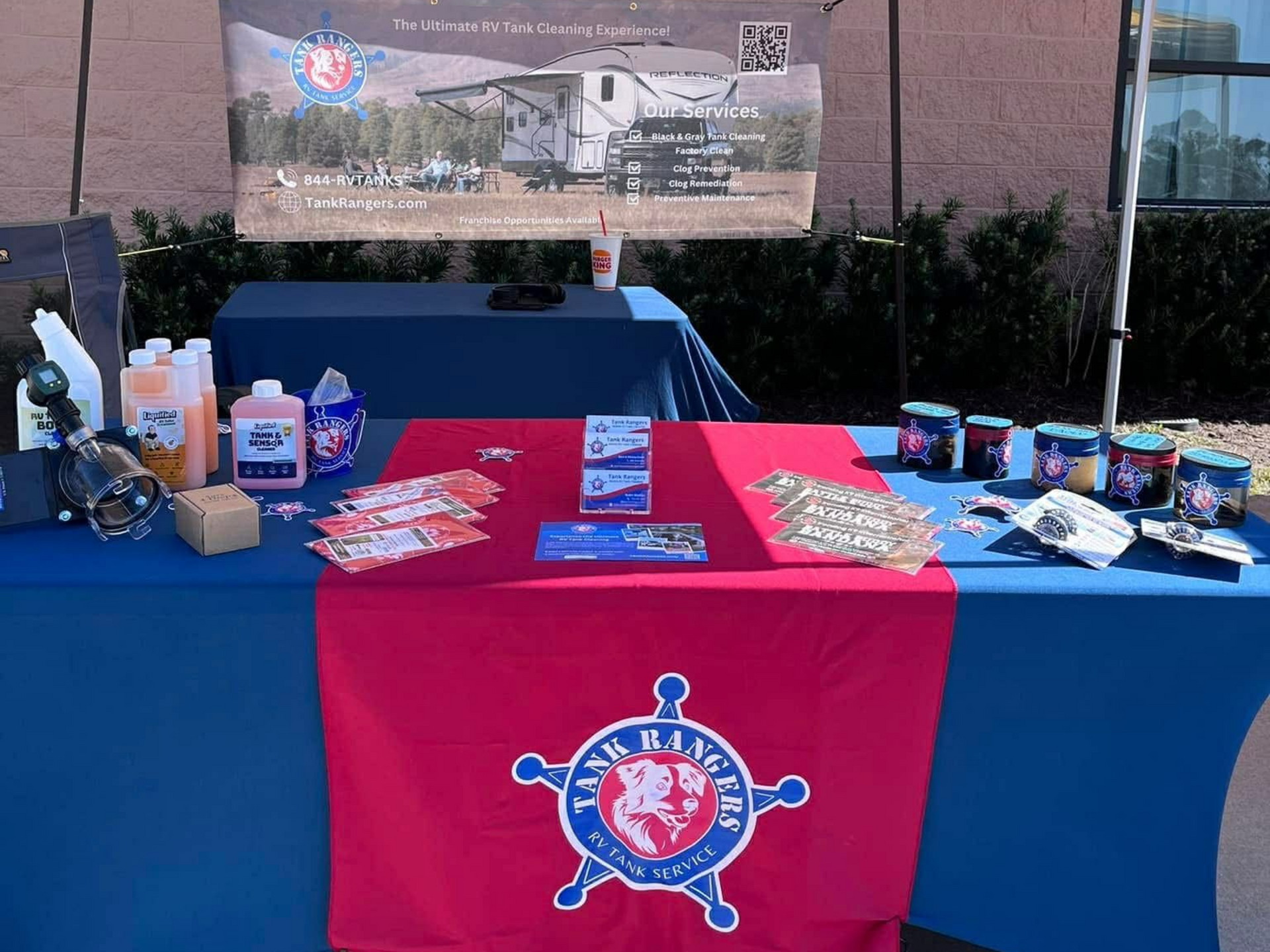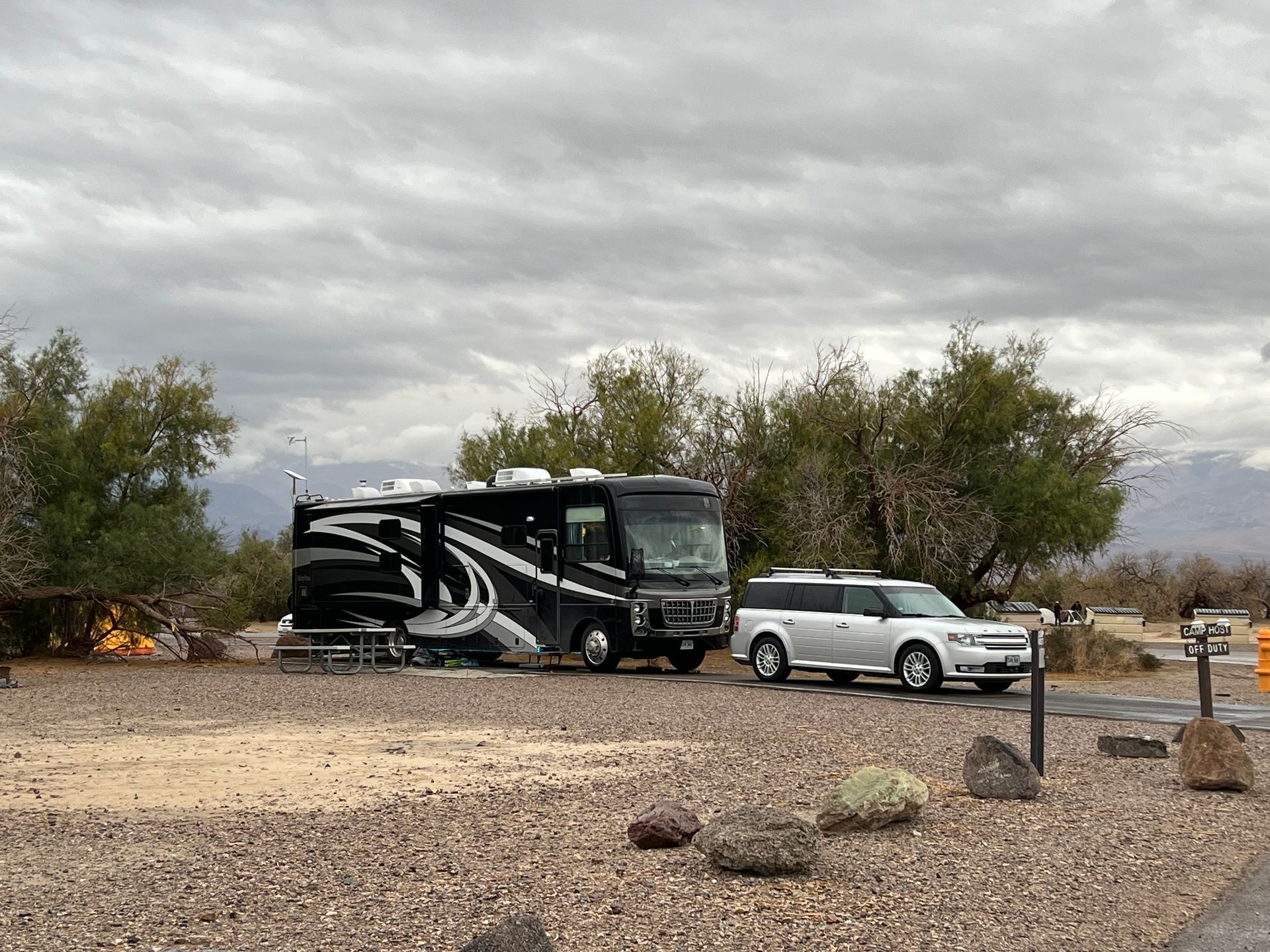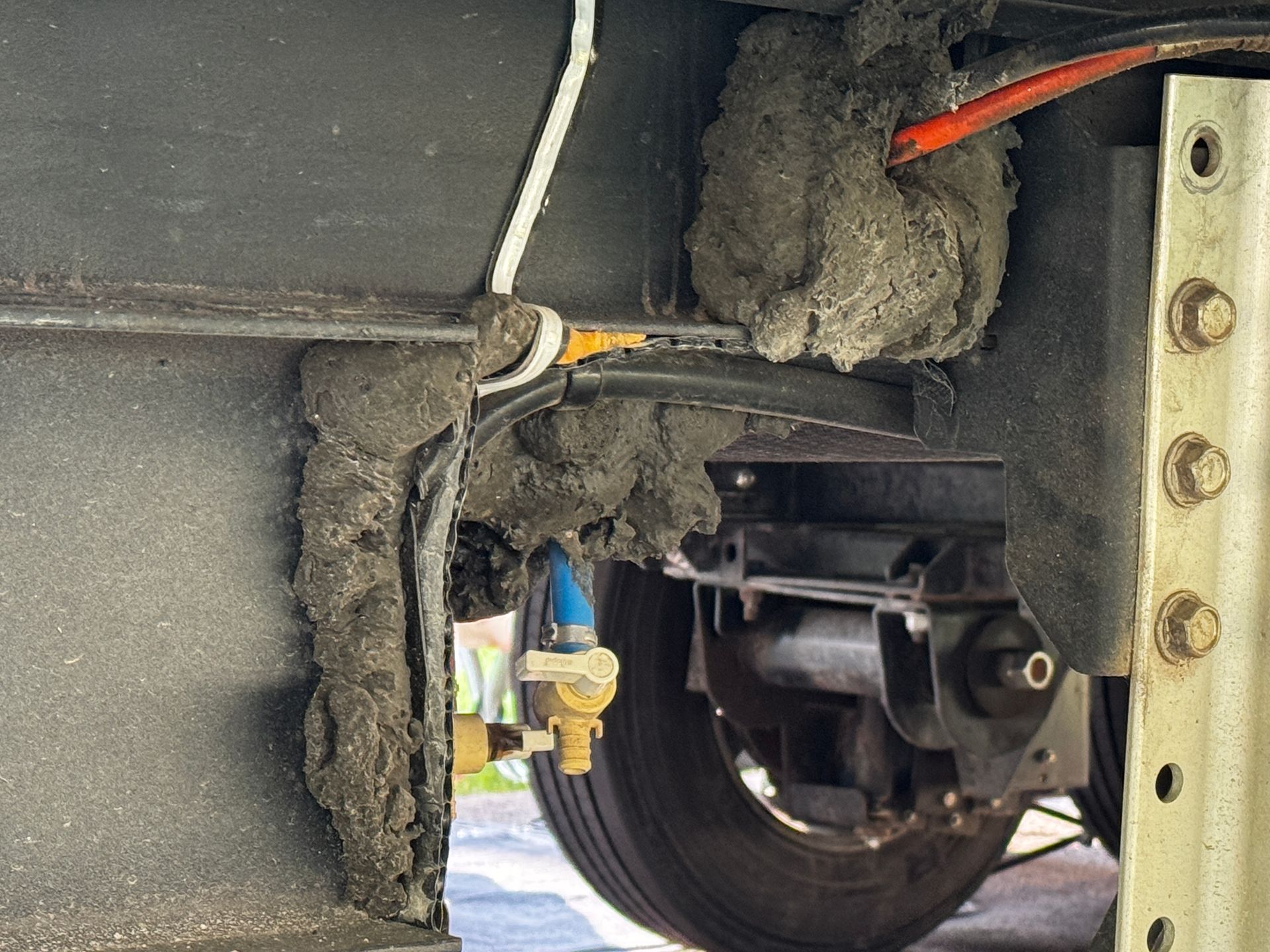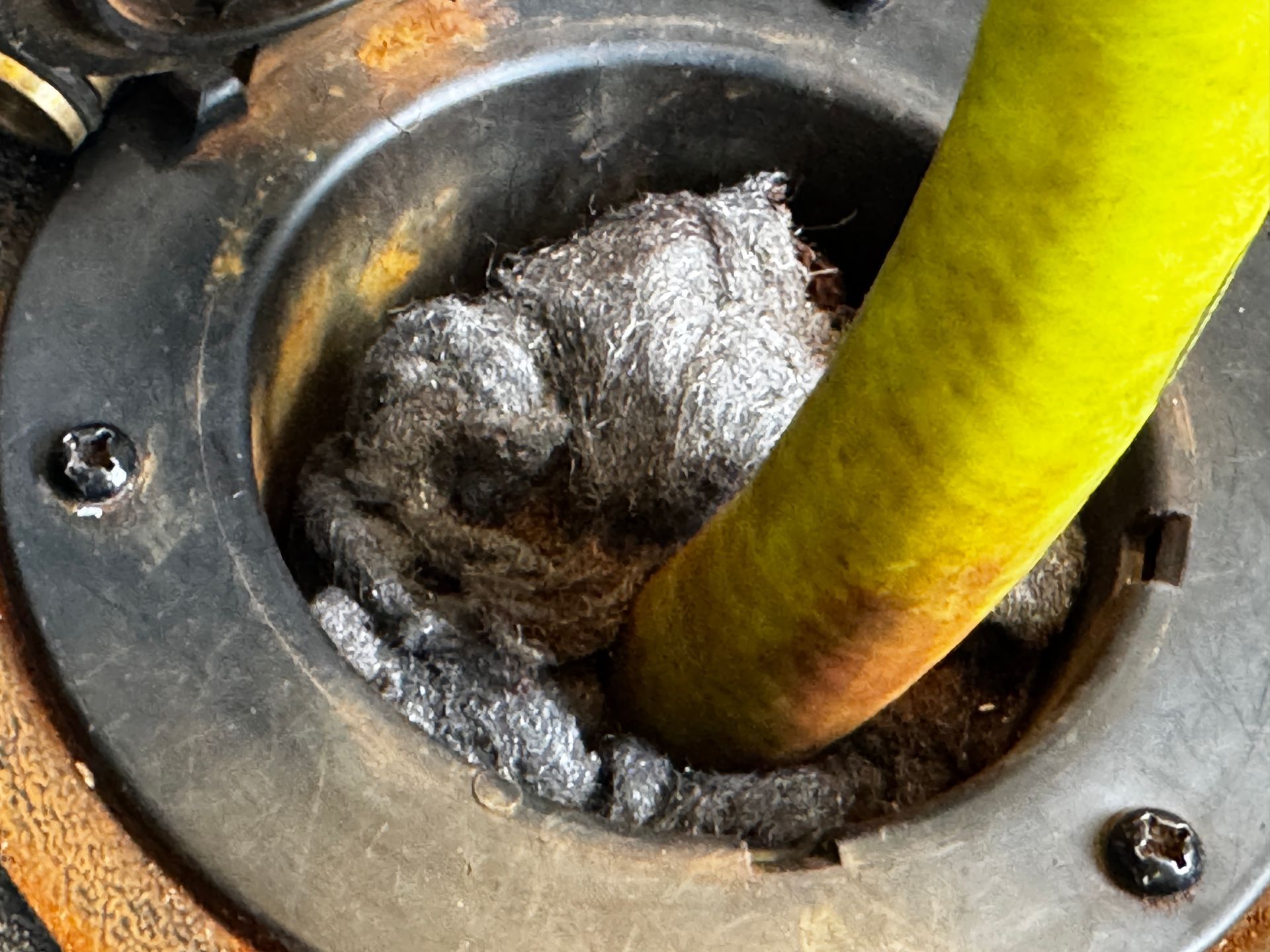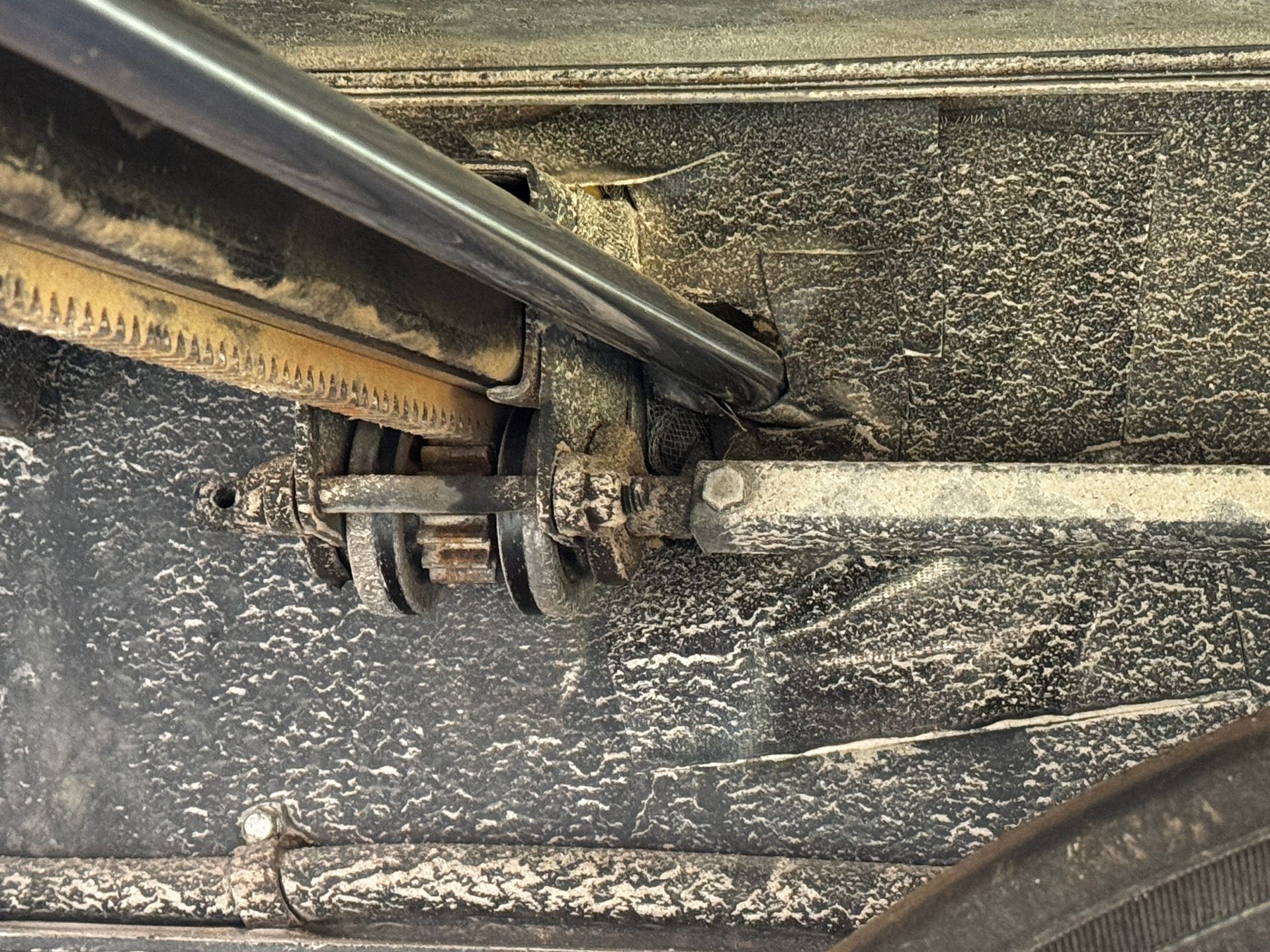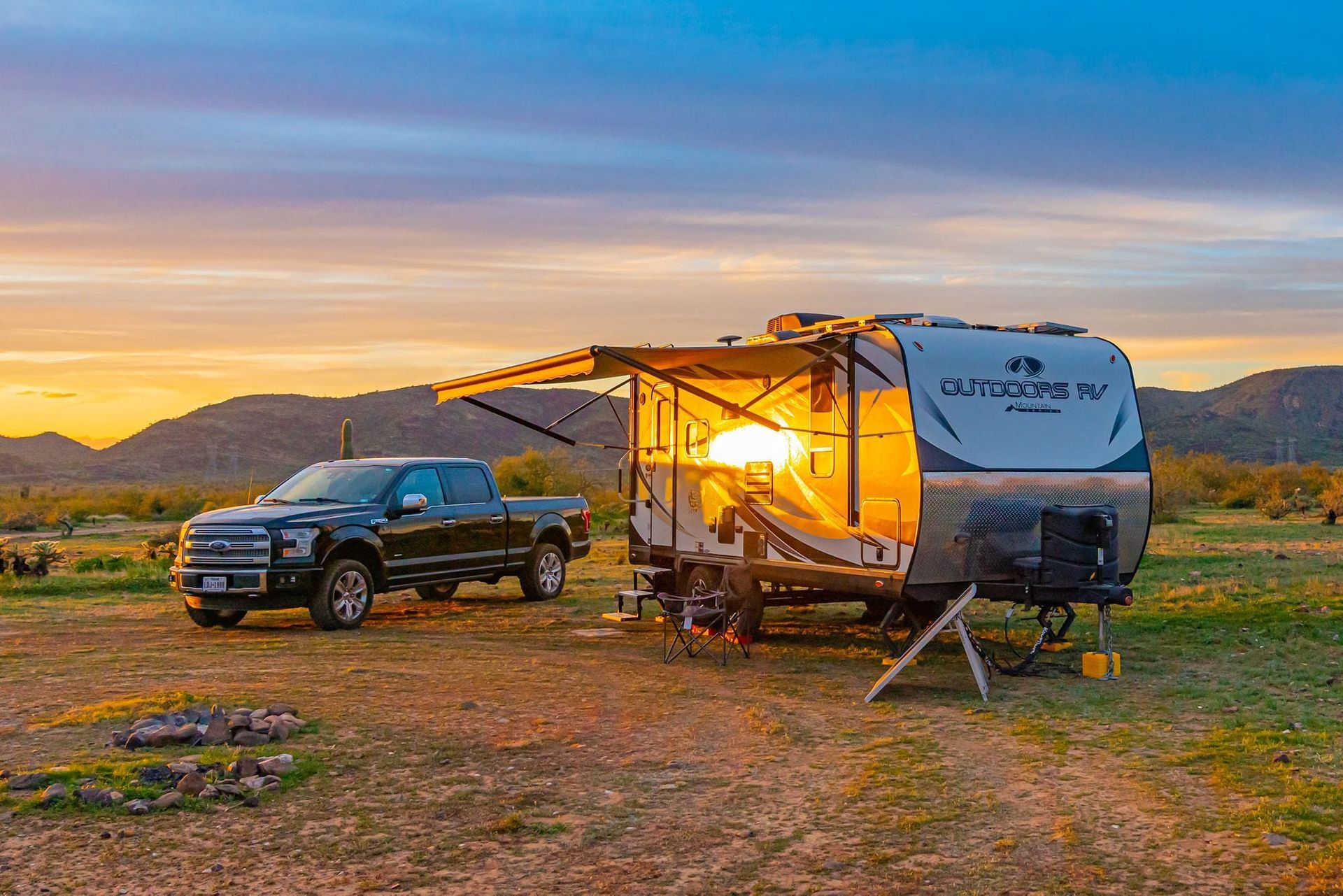Mice in the RV? How to Keep Critters Out of Your Home on Wheels
Jennifer+ Aggio • September 10, 2025
If you’ve spent any time RVing, you already know you’re not the only one who thinks your rig looks cozy. Warmth, shelter, and even the tiniest crumb of food can turn an RV into a five-star resort for rodents. Mice, pack rats, and even the occasional chipmunk will happily move in if you give them half a chance.
We’ve had three different rigs over the years—a travel trailer, a motorhome, and now a fifth wheel—and in each one, we’ve had to learn (sometimes the hard way) how to deal with critters. Show me an RVer who hasn’t had a run-in with a mouse, and I’ll show you someone who probably hasn’t camped long enough yet!
What’s funny is how different rodents can be depending on where you are in the country. In some areas, mice are shy and easy to catch. In others, like southern Utah, they’re bold and fearless—practically daring you to try and stop them. Pack rats in the desert can be destructive little nest-builders, while in the Midwest you might just be dealing with your run-of-the-mill house mouse looking for warmth in the winter.
Over the years, we’ve learned a lot about keeping critters out (and sometimes getting them back out once they’re in!). Here’s our best advice for keeping your RV rodent-free—whether you’re putting it in storage or living in it full-time.
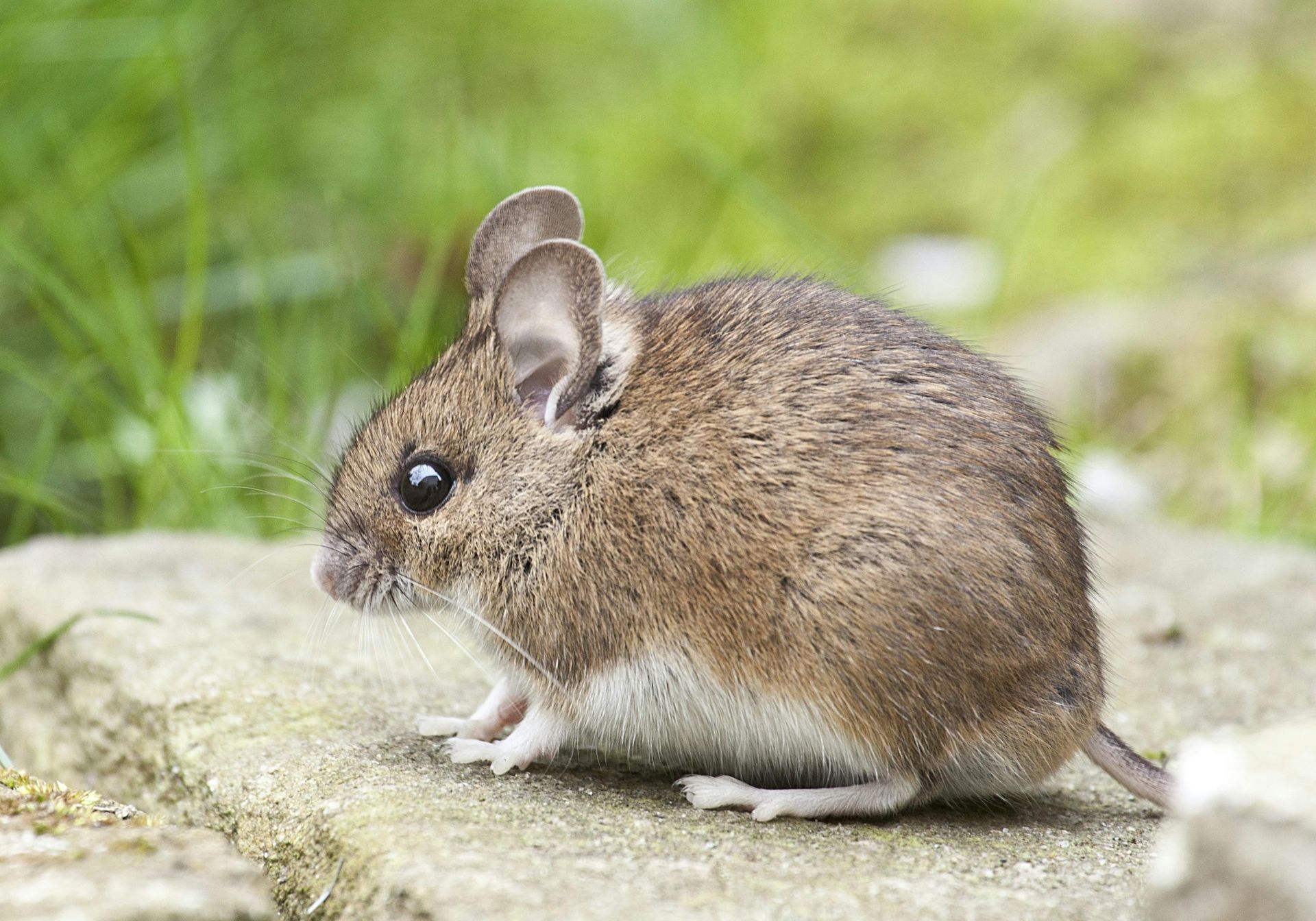
Fun Facts About Mice (That RVers Should Know!)
They’re escape artists. Mice can squeeze through a hole as small as ¼ inch, about the size of a dime. If you can fit a pencil through it, a mouse can probably fit too.
Start With Spotless
The number one rule: don’t invite them in with food. Before putting your RV into storage, or even just when parked for long stretches, clean it like your mother-in-law is coming over.
- Sweep and vacuum every nook and cranny.
- Wipe down counters, shelves, and drawers.
- Don’t forget the hidden places like under cushions, behind the stove, or inside the pantry.
- Remove dry goods, cereals, pet food, and even scented items like soap or candles.
If there’s nothing to snack on, mice are less likely to stick around.
For those of us who live full-time in our RVs, this isn’t just a one-time project before storage, it’s a daily routine. Crumbs under the dinette, snacks left on the counter, or even pet kibble in the bowl can feel like a buffet to a hungry mouse. We make it a habit to:
- Do a quick sweep and wipe down every evening.
- Take trash out daily (especially anything food-related).
- Store pantry items in sealed containers like glass jars, plastic tubs, or heavy-duty bins.
We also keep our food in what we call “rodent-free cabinets.” These are cabinets that are fully enclosed with no plumbing or wiring holes leading into them. If a mouse ever did sneak into the RV, there’s no way it could reach the food inside. It gives us peace of mind knowing our food and snacks aren’t vulnerable even if the unexpected happens.
Full-time RV life means sharing space with nature—but with a little consistency, you don’t have to share your kitchen with mice.

Fun Facts About Mice (That RVers Should Know!)
They’re gymnasts. Mice can jump up to 12 inches high and climb vertical surfaces like wires, cords, and rough walls. That means even higher cabinets aren’t always safe if there’s an opening nearby.
Do Deterrents Work?
This is where RVers get creative—and sometimes a little superstitious. Ask ten RV owners what they use to keep mice out, and you’ll probably get ten different answers. Everyone seems to have a “secret trick” that worked for them at least once, and some of these ideas have been passed around campgrounds for decades.
Here are some of the most common deterrents you’ll hear about:
- Peppermint oil & essential oils: Fresh and tingly, but the effect doesn’t last long.
- Irish Spring soap & dryer sheets: Fun myths, sometimes they work, often they don’t.
- Lights under the RV: Helpful since rodents prefer dark, quiet spaces.
- Ultrasonic devices: From our experience, these are hit-or-miss. In some places, they’ve worked beautifully. In others (like southern Utah), the mice were downright fearless! It seems to depend on the breed and local population.
- Fresh Cab pouches: A natural, plant-based deterrent that many swear by.
- Cayenne pepper or mothballs: Strong deterrents but can be toxic or too smelly for people and pets.
We’ve tried many of these ourselves and heard countless campground stories about what “really works.” The truth? Deterrents can sometimes help tip the odds in your favor, but they’re not foolproof. Think of them as a support system—not the main defense.
If you’re serious about keeping mice out, you’ll need a layered approach: seal every hole you can find, keep your RV spotless, and then use deterrents as an extra line of defense.
Bottom line: deterrents can help, but you can’t rely on them alone. Prevention is always going to be your strongest weapon against uninvited furry guests.

Find the Holes (and Seal Them)
Here’s the not-so-fun fact: mice can squeeze through holes as small as ¼ inch—about the size of a dime. That means every plumbing line, wire pass-through, or slide-out seal is fair game.
Grab a flashlight and do a daytime inspection. Crawl underneath your rig and look for sunlight peeking in. Check around:
- Plumbing penetrations
- Electrical wiring
- Vents and the underbelly
- Slide-out corners and seals
Seal openings with pest-resistant spray foam, steel wool, or hardware cloth. This is the ultimate deterrent. Traps and oils help, but plugging holes is what keeps mice out for good.
Pro Tip: Don’t forget to plug the area where your water hose or power hose might come into the rig. We use steel wool here, easy to remove when we need to put it away or put in place when the hose is in use.
Our Experience: Plugging Every Hole
We learned this the hard way when we bought our fifth wheel. The very first thing—and I mean the very first thing—we did was grab a can of spray foam and go to town. My dad and my husband teamed up and spent hours inspecting every nook and cranny, filling what they thought was every last gap. Our goal was simple: never let a mouse set foot in our brand-new RV.
But reality had other plans. Within days of moving it back to our campground in southern Utah, we had our first intruder. The mouse was hanging out in the cabinets near and behind the stove, which told us one thing, there was a hole somewhere in that slide. Sure enough, after some investigating, we found one we’d missed. Plugged!
A few days later, another mouse showed up, this time near the kitchen island. That area connects directly to the underbelly and basement, which meant there were endless possibilities. After more detective work, we discovered the culprit: the slide bar. It created a perfect little highway for the mouse to sneak right into the island. That one was trickier because the bar needed room to move. Our solution? Fine mesh metal, taped securely, with just enough clearance for the bar but no way for a mouse to squeeze through.
This process went on for nearly three months. Every time we thought we had it sealed up tight, another mouse proved us wrong. But little by little, we found the weak spots, patched them, and tested again.
The moral of the story? When you think you’ve plugged every hole, you probably haven’t. Don’t give up. Keep inspecting, keep sealing, and eventually, you’ll win the battle. For us, it paid off—we’ve now been rodent-free for over a year!
Fun Facts About Mice (That RVers Should Know!)
They’re marathon runners. A mouse can run up to 8 miles in one night while foraging. In RV terms—that’s like lapping your campground dozens of times looking for a snack!
When Prevention Fails: Removing Mice
If one does sneak in, the quickest way to get them out is the classic snap trap. Humane? Not really. Effective? Absolutely. There’s a reason these have been around for generations, they work.
Baiting Tips
- Use peanut butter—it’s sticky, smells strong, and mice can’t resist it.
- Less is more! Just a tiny smear is all you need. Too much and the mouse might lick it off without springing the trap.
Placement Matters
- Tuck traps behind the stove, under cabinets, and in basement storage areas where mice like to hide.
- If you’re actively battling a mouse, don’t be shy, set traps in the middle of the floor overnight. You’d be surprised how often they’ll get bold once the lights go out.
- Place them along walls or in dark corners since that’s where mice usually travel.
Check Often
- Traps should be checked daily, both for success and to make sure they’re still armed and ready.
- Reset them until you’re confident the problem is handled. Sometimes you’ll catch the first intruder right away, other times it may take a few days.
What to Avoid
- Skip glue traps—they’re messy, inhumane, and can actually cause more stress if the mouse drags it into an inaccessible corner.
- Poison baits aren’t a great choice for RVers either. They can be dangerous to kids and pets, and poisoned mice may crawl into walls or underbelly spaces, leading to awful smells.
A Real-World Note
When we had mice sneak into our fifth wheel, snap traps were our go-to. We’d bait several at once and spread them out across the “hot zones.” Nothing feels better than coming out in the morning and finding that the invader is gone. It was the only method that gave us consistent, reliable results when deterrents and gadgets fell short.
If you prefer a more humane option, live traps are a better choice—but honestly, those work better for bigger critters like chipmunks (and yes, we’ve had that adventure too!).
Fun Facts About Mice (That RVers Should Know!)
They’re breeders. One pair of mice can turn into dozens within months if they find a safe, food-filled spot. That’s why stopping them early matters.

The Chipmunk Incident (Yes, Really!)
Not all invaders are mice. Once, we had a chipmunk sneak into our motorhome—and let me tell you, that little guy was fast! We still aren’t entirely sure how it managed to get inside, but since it mostly hung out near the driver’s area, we suspect it found its way in through the engine somehow.
At first, we didn’t even realize it was a chipmunk. We just assumed we were dealing with another mouse, so we went straight to our usual game plan: snap traps. We set them up, left the RV quiet in hopes it would take the bait, and waited. The traps would get triggered, but nothing was ever caught. That had never happened to us before. Weird!
Thinking maybe the traps were just a little too stiff, we adjusted them looser and looser, so they’d go off at the slightest touch. Still, no success. A couple of days went by, and life had to go on, so we kept the traps set and carried on with our routine.
Then we spotted it. This wasn’t a mouse at all—it was a chipmunk! Suddenly it all made sense. The traps weren’t failing; they were simply too small for our oversized intruder. Now came the real question: how on earth were we going to get a chipmunk out of an RV?
We tried the obvious first: leaving the front door open. Nope. Then we tried gently “chasing” it toward the exit. Nope again. We even set a plate of peanut butter on the steps to lure it out. It came close, nibbled a little, but darted right back inside. No matter what we did, it just wouldn’t leave.
Finally, we decided we needed a live trap. Miraculously, we managed to find one locally (a surprise considering we were in the middle of nowhere). We set it up with bait, and after a half-day of waiting, the chipmunk finally gave in to hunger and wandered inside. Success!
We carefully carried the trap outside, loaded it into the truck, and chauffeured our little guest five miles up the road for release. Watching it dart back into the trees was both a relief and a laugh-out-loud moment.
It was an ordeal, sure—but also a reminder that RV life keeps you on your toes. From mice to chipmunks, sometimes you’re not just traveling the country, you’re running your very own wildlife relocation program.
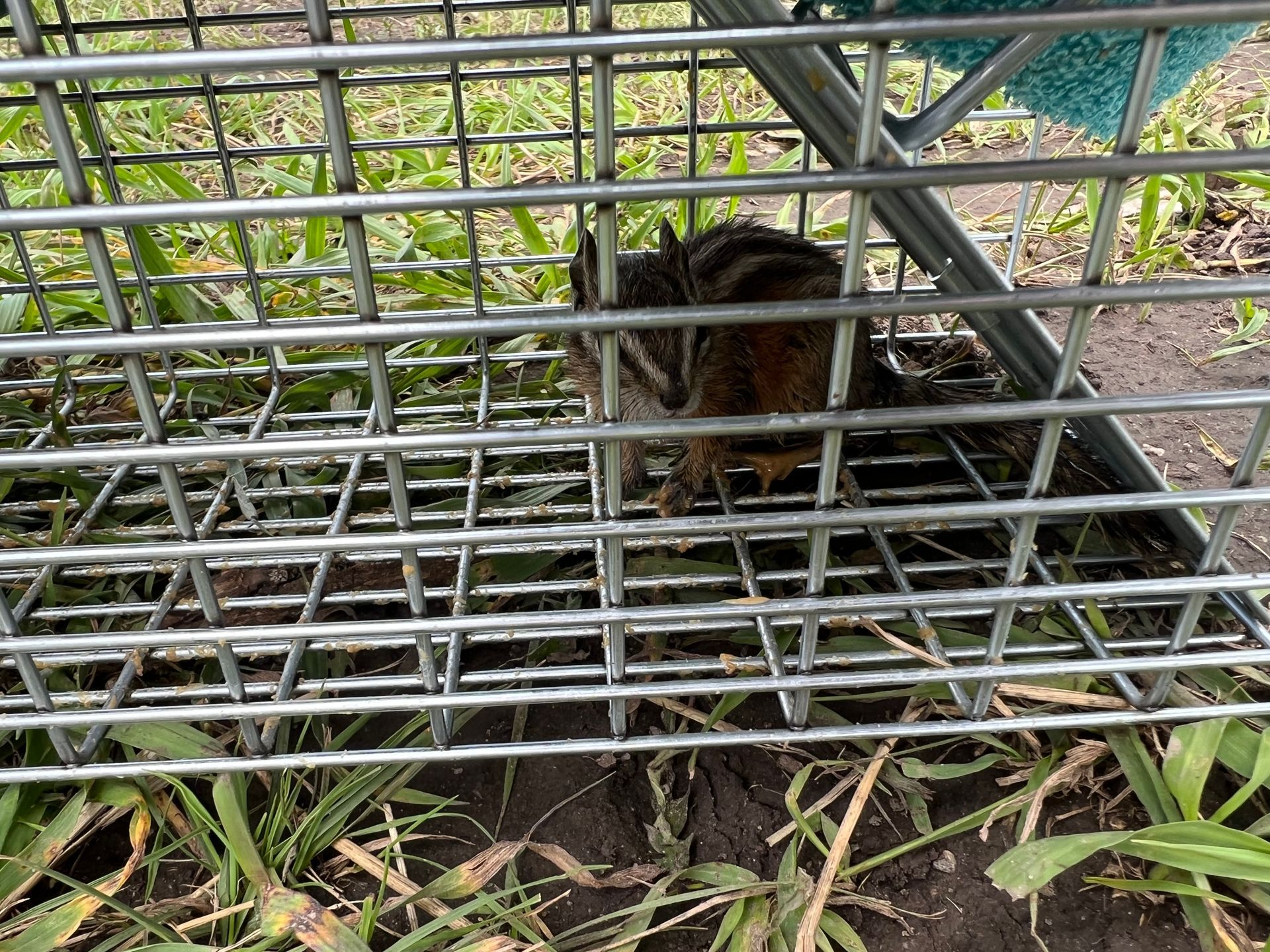
Storing Your RV? Strategies That Help
If you’re putting your RV into storage—whether it’s for a few weeks or the whole off-season—rodents will see it as the perfect winter getaway. An unused, quiet rig is a prime target, so it’s extra important to be proactive before you close it up. Here are some strategies that can make a big difference:
- Inspect regularly while in storage. Even if your RV is parked for the season, make it a habit to stop by every few weeks. Look for droppings, nesting material, or new entry points before a small problem turns into a full-blown infestation.
- Park on gravel or concrete instead of grass when possible. Rodents love tall grass and natural cover. Parking on gravel, concrete, or pavement makes it harder for them to hang out right under your rig.
- Keep the area tidy. Don’t store wood piles, boxes, or brush near your RV. These create perfect hiding and nesting spots that draw rodents closer.
- Use moisture absorbers. Rodents dislike overly dry environments, and moisture absorbers help keep both your RV interior fresh and less appealing to pests.
- Consider natural predators. Believe it or not, a barn cat can be one of the best deterrents for rural storage. Just the scent of a cat nearby can be enough to convince rodents to move along.
- Do a “last meal sweep.” Before storage, remove all food items, no exceptions—pantry goods, pet food, snacks, even scented items like candles or soap. If it smells edible, a mouse will be interested.
- Set a couple of snap traps for good measure. Even if you think you’ve sealed every entry point, leaving two or three snap traps baited with peanut butter in “hot zones” (like the basement, under the sink, or behind the stove) can act as your backup defense. If a sneaky mouse finds its way in while you’re away, you’ve got a chance to catch it before it sets up camp.
When it comes to storage, prevention is key. Once mice get inside an unused RV, they can do serious damage before you even realize they’re there. By taking the time to prepare your rig properly, you’ll have a much better chance of opening the door months later and finding it exactly the way you left it, minus the furry freeloaders.
Fun Facts About Mice (That RVers Should Know!)
They’re chewers. Mice constantly gnaw to keep their teeth short. Unfortunately, in RVs that means wires, insulation, and even soft plastics can be fair game—leading to costly or dangerous damage.
Final Thoughts
Rodents in the RV aren’t fun, but they’re an almost inevitable part of the lifestyle. Spend enough time on the road or in storage, and eventually you’ll cross paths with a furry little stowaway. The good news is, you can stay ahead of them with the right game plan.
The real secret is a layered approach:
- Clean it out. Don’t leave behind crumbs, pet food, or scented items that could tempt a mouse.
- Seal it up. Plug every hole you can find, and keep checking until you’re confident they’re closed off.
- Set deterrents. Use peppermint oil, Fresh Cab, or ultrasonic devices as extra protection.
- Stay vigilant with traps. Snap traps are your best backup when all else fails.
Do that, and you’ll be ahead of most critter problems before they ever start. And if you do find yourself with a stowaway—whether it’s a mouse, a pack rat, or even a chipmunk—you’ll be ready with a plan (and maybe walk away with a funny campfire story too).
At the end of the day, RVing is all about adventure. Sometimes that means mountains, sunsets, and starry skies… and sometimes it means outsmarting a mouse in the middle of the night. Either way, it’s all part of the journey.
Other blogs you might like...

